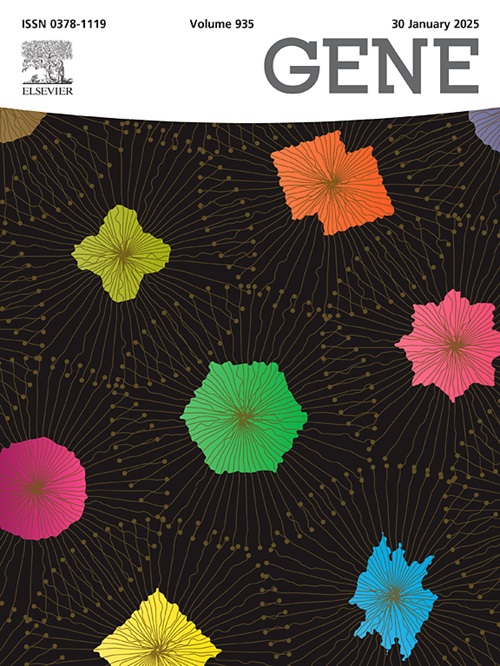A multi-modal molecular characterization of the Philadelphia translocation featuring long read sequencing
IF 2.6
3区 生物学
Q2 GENETICS & HEREDITY
引用次数: 0
Abstract
Objective
Clinically significant structural variation (SV), notably chromosomal translocation, results in the formation of fusion genes that drive leukaemogenesis. Detection of SVs is vital in clinical diagnosis, prognosis and therapy of haematological malignancies. Current methods for SV identification are low in sensitivity for cryptic cases and time-consuming for complex cases. This study investigated the feasibility of long read sequencing as an approach for SV detection and precise breakpoint characterization.
Methods
Six archival samples, including 4 bone marrow blood samples (F/66 B-ALL, F/25 B-ALL, M/53 CML, F/34 B-ALL) and 1 cytogenetic cell pellet each in cell culture medium (M/52 CML) or Carnoy’s fixative (M/44 CML) with known and previously characterized BCR::ABL1 fusion transcript were selected for study. The genomic DNA was extracted from each case for further breakpoint characterization by long read sequencing (MinION R9.4.1 flow cell, Oxford Nanopore Technologies, UK).
Results
All the genomic breakpoints were concordant with the RNA fusion transcript breakpoints. Three typical (e1a2, e13a2, and e14a2) and 3 variant (e23a2Ins52, e8a2, and e13a2ins74) BCR breakpoints were identified.
Conclusion
Using the Ph translocation as an example, long read sequencing is a promising alternative method to detect SV, revolutionizing detection of chromosomal translocation to a higher precision. A more comprehensive spectrum of SV can be resolved along with cytogenetic results, enabling precise diagnosis and personalized monitoring of haematological malignancies.
以长读数测序为特色的费城变位多模式分子特征分析。
目的:临床显著的结构变异(SV),特别是染色体易位,导致融合基因的形成,驱动白血病的发生。SV的检测对血液系统恶性肿瘤的临床诊断、预后和治疗具有重要意义。目前的SV鉴定方法对隐性病例敏感性低,对复杂病例耗时长。本研究探讨了长读段测序作为SV检测和精确断点表征方法的可行性。方法:选取6份档案样本,包括4份骨髓血样(F/66 B-ALL、F/25 B-ALL、M/53 CML、F/34 B-ALL)和1个细胞遗传细胞颗粒,分别在已知和已知的BCR::ABL1融合转录物的细胞培养基(M/52 CML)或Carnoy固定液(M/44 CML)中进行研究。从每个病例中提取基因组DNA,通过长读测序进一步鉴定断点(MinION R9.4.1 flow cell, Oxford Nanopore Technologies, UK)。结果:所有基因组断点均与RNA融合转录物断点一致。确定了三个典型的BCR断点(e1a2, e13a2和e14a2)和3个变体(e23a2Ins52, e8a2和e13a2ins74)。结论:以Ph易位为例,长读段测序是一种很有前途的检测SV的替代方法,将染色体易位检测的精度提高到更高。更全面的SV谱可以与细胞遗传学结果一起解决,从而实现对血液恶性肿瘤的精确诊断和个性化监测。
本文章由计算机程序翻译,如有差异,请以英文原文为准。
求助全文
约1分钟内获得全文
求助全文
来源期刊

Gene
生物-遗传学
CiteScore
6.10
自引率
2.90%
发文量
718
审稿时长
42 days
期刊介绍:
Gene publishes papers that focus on the regulation, expression, function and evolution of genes in all biological contexts, including all prokaryotic and eukaryotic organisms, as well as viruses.
 求助内容:
求助内容: 应助结果提醒方式:
应助结果提醒方式:


